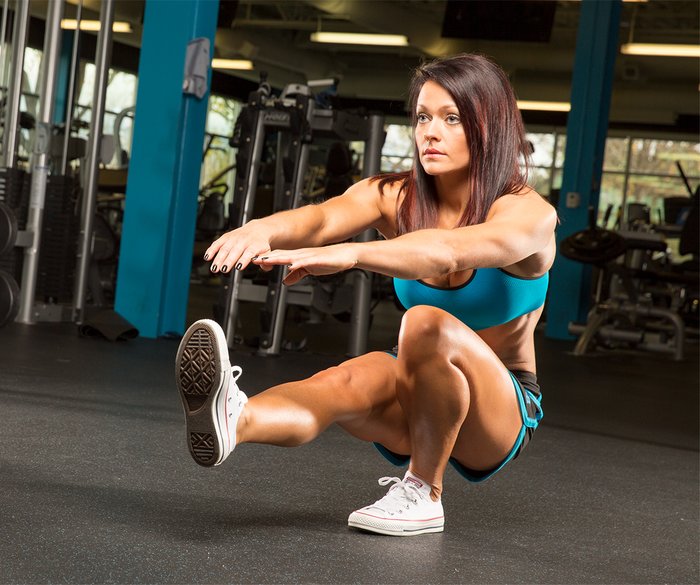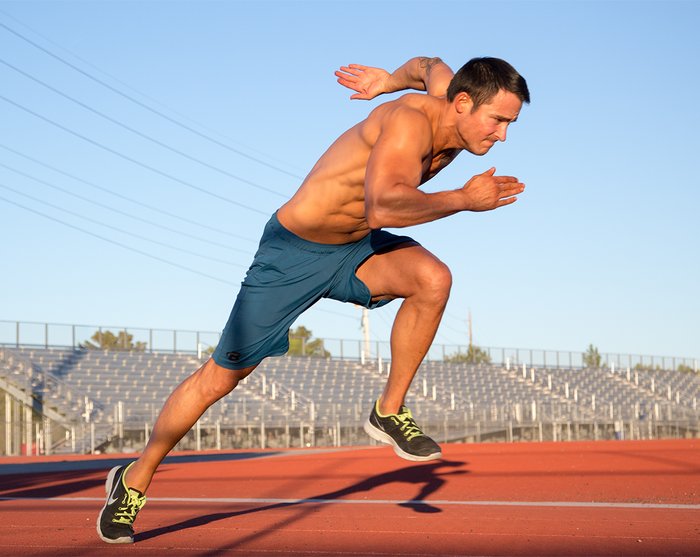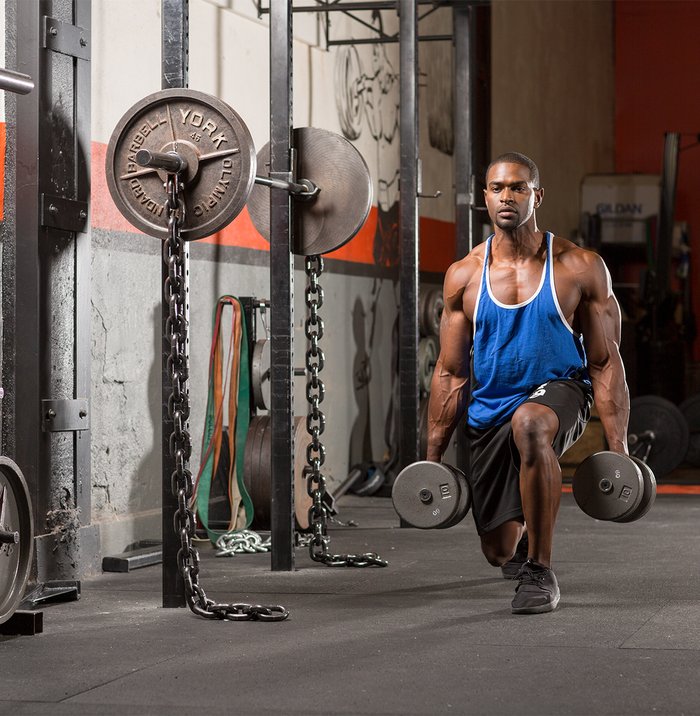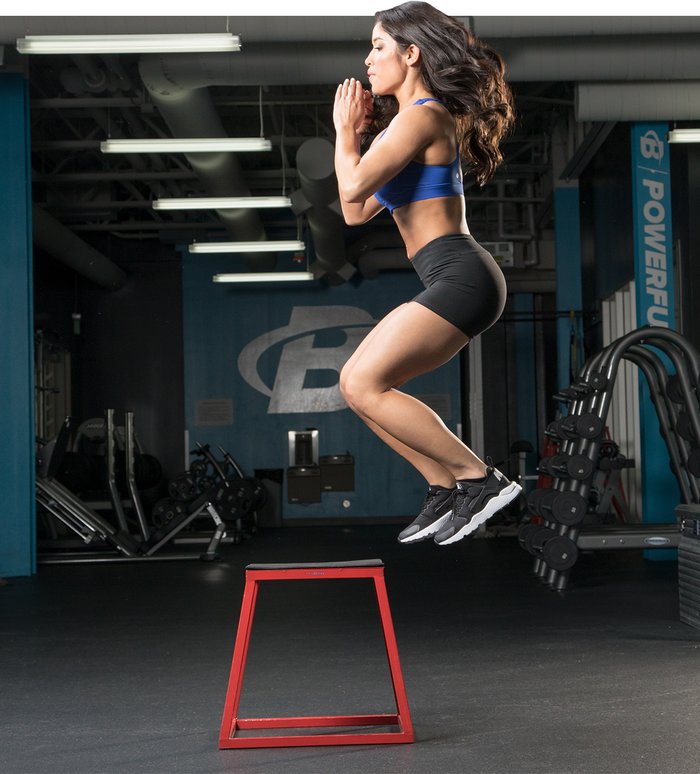If you are looking to break away from the traditional gym routine, the excitement and thrill of adventure racing might be just what you need. And, there's no shortage of options. You can opt for a group-based Tough Mudder event, where you and your friends go at it as a team, or you can fly solo in a Spartan Race, competing on your own and challenging your personal limits. Whichever event you choose, be prepared to put your body to the test.
Adventure races offer their fair share of challenges, and completing one is no easy feat. Just as you would prepare for any competitive and highly athletic sport, you need to train seriously for these races if you want to do well.
Building a base level of strength and agility before you sign up for that adventure race ensures you are well prepared to put your best foot forward. Keep in mind that these courses are unpredictable, and there's no way to completely prepare for them. The best you can do is create a workout routine that's also a little unpredictable and works your body across as many different modalities as possible.
Let's look at six moves guaranteed to build your strength, endurance, and agility before you sign up for that adventure race.
1. Power Clean
Why start with the power clean? Simply because the explosive power it takes to lift a maximum load uses almost every muscle group in your body. When you're trying to overcome an obstacle and must drag your body weight from point A to B, you'll be thankful this total body exercise gave you the strength you needed.

Remember, these courses are unpredictable, so try to change things up. You might try full power cleans one day, hang cleans the next, and squat cleans another. You can even test your fitness with split cleans when you're feeling especially strong.
While these exercises have similar overall movement patterns based on the power clean, the variations they offer are just what you need to train for adventure racing.
2. Pull-Up
The next move to master is the pull-up. This exercise has two unique benefits: First, it strengthens your back muscles, which you will need to pull yourself over obstacles and climb up ropes. Second, it helps improve your grip strength, which is also required to climb over walls or up a rope. Both attributes will give you an incredible edge in any race you enter.

There are many pull-up variations, such as close-grip, wide grip, one arm, clapping, or around the world.
You'll have many opportunities to add a new variation as you train for the race, so make sure you're regularly changing things up.
3. Single-Leg Exercises
Single-leg exercises such as the single-leg split squat, single-leg pistol squat, and isolateral leg press are all terrific additions to any adventure racing workout routine.
Single-leg exercises help build better agility and balance. When you get into the race and start climbing up the obstacles, you can rest assured your agility will be put to the test.

Isolating each leg also helps improve muscular imbalances. If you're constantly doing standard double-leg exercises—regular squat, regular leg press and so forth—one leg could be overcompensating for the other without you even realizing it. Single-leg work is the only way to remedy this situation.
Single-leg exercises help you gain maximum strength in each leg while minimizing the wear and tear on your lumbar spine. Since single-leg movements require less weight, you won't load as much weight onto your spinal column while building strength.
Adventure races are difficult enough as it is, you don't want to add another obstacle in the form of a stiff and sore lower back.
4. Interval Sprint
Adventure races are strength and endurance endeavors, and your cardiovascular conditioning must be top notch to make it through. You'll need not only the ability to sprint and produce maximum energy and effort, but also the ability to last until the finish line.

Interval sprint training is one of the best ways to improve your endurance capabilities, preferably while running uphill. By adding the inline, you'll strengthen your lower body while building up maximum cardiovascular endurance and power.
Combine uphill sprints lasting anywhere from 30-60 seconds and endurance sessions done one pace for a full 60 minutes. If you can do 2-3 sprint sessions per week along with 1-2 longer endurance-focused cardiovascular sessions, you'll be getting the best of both worlds.
5. Walking Lunge
The walking lunge is another move to include as you get ready for your adventure race. This is a great lower-body builder and will give you better leg endurance when you're tired and trying to make it uphill.

The walking lunge hits the quads, hamstrings, and glutes, while helping you simultaneously develop excellent core balance and dynamic strength. All of this is very useful to you as you try to maneuver yourself through the obstacle course.
6. Box Jump
The last exercise to master as you prepare for your first adventure race is the box jump. It will help you build excellent plyometric power, while strengthening the muscles of your lower body.

As you improve your skills in the box jump, you'll find you have more power to jump up or over obstacles when you're out on the course. Box jumps also help build up your core strength and improve your cardiovascular conditioning.
To add this powerhouse move to your workout, perform 5-10 box jumps in a row, rest, then repeat. Once you've mastered one box height, move to a slightly taller one.
The Finish Line
Adventure races are a great way to add excitement and challenge to your workout routine.
By mastering these six exercises, you can be confident that your body is well trained and you have what it takes to get through to the finish line.

